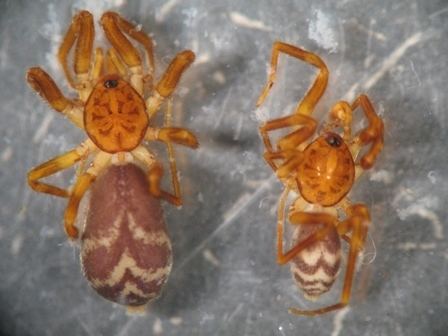Order Araneae Rank Genus | ||
 | ||
Similar Tarsonops, Nops, Calponia harrisonfordi, Caponiidae, Haplogynae | ||
Distinctive group of relatively small spider caponiids species known only from the West Indies. The genus currently counts 11 extant species, but probably the real number is greater. Most species are very small (4–10 mm body length), and are very difficult to find in nature. They are wandering hunters, generally found at ground level, under stones, in leaf litter or in the soil. Although the records of Cubanops are only from the Bahama Islands, Cuba, and Hispaniola, a few female juvenile specimens sharing the somatic characters of the genus have been taken on St. John, suggesting that Cubanops probably occurs in Puerto Rico as well as the Virgin Islands.
Contents
Species
Cubanops Sánchez-Ruiz, Platnick & Dupérré, 2010
Monophyly
Cubanops is a nopinae genus (i.e., have subsegmeted tarsi). These West Indian spiders show two other unusual leg characters that are often found in nopine genera: the ventral translucent keel on the anterior metatarsi, and the translucent extension of the membrane between the anterior metatarsi and tarsi. However, these species differ from the other nopines with these leg modifications in having a distinctively patterned carapace, a greatly widened labium, and a bisegmented metatarsi IV. Two species groups are recognized within the genus: ludovicorum group, with the embolus relatively short and wide, and the female receptaculum relatively low. alayoni group, with the embolus relatively long and narrow, and the female receptaculum relatively high (see Sánchez-Ruiz et al. 2010).
